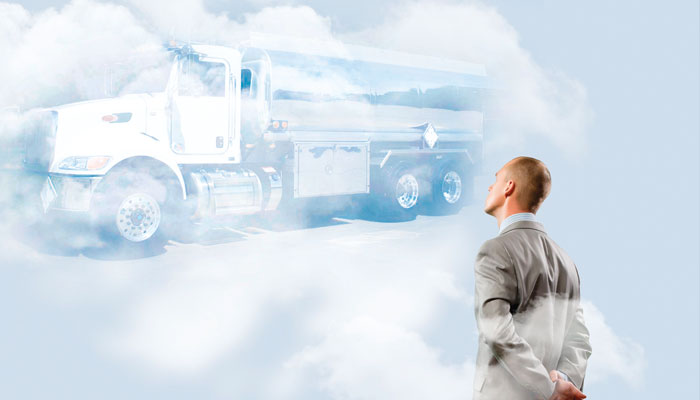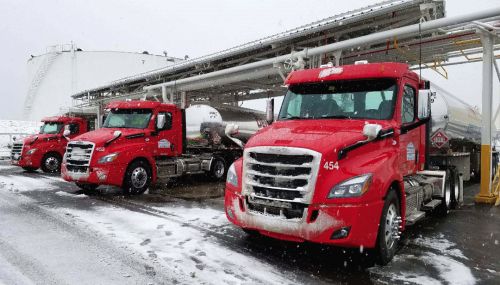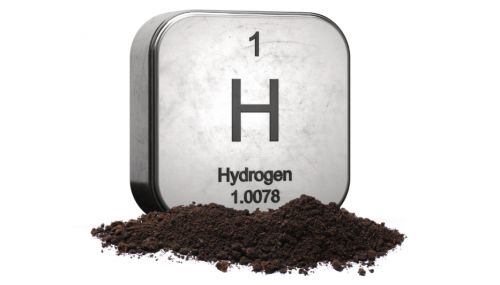Oil and Energy recently reached out to John Faris III, Vice President at Oilmen’s Truck Tanks, Inc. to discuss the process of buying and outfitting a new tank truck.
Oil & Energy: What are some of the key decisions that buyers face when ordering a new fuel truck?
John Faris III: First, where will the chassis be serviced? Buyers that approach us with a strong chassis preference usually do so because of a good working relationship with a local dealer. They are keenly aware of how costly downtime is and do their best to keep it to a minimum. It is in our best interest to make sure the customer is happy with his chassis, as it will influence his impression of the entire unit. Working with a truck tank company that has a large selection in inventory gives the buyer flexibility to make the best long-term decision. As with all capital investments, it is important to look at the lifetime cost of the purchase – not just the upfront expenditure.
Secondly, make, model and specs of the chassis. Chassis become more complex with each passing year. The addition of new emission equipment has limited the space that fuel truck manufacturers have along the frame rails. It is important to get the truck tank manufacturer involved as early as possible in the process. If they choose to buy the chassis from a dealer it needs to be specified correctly in order to avoid costly adjustments during the tank and equipment mounting process. What may seem like a “deal” might not be after you spend several thousand dollars moving equipment around to properly configure the truck for a tank application.
Buying the right size engine and transmission combination is also important. While a smaller engine may cost less upfront, it may come at the expense of performance (think merging onto a busy highway). Also, a larger engine may hold more value in the secondary market.
Thirdly, tank and equipment. Supplier terminal requirements can change, and buyers need to understand current rules and regulations at the terminals they plan to source from. This may dictate compartment size and overall size of the tank.
Choosing the right style of tank is important. Some operators prefer an enclosed rear style tank that keeps the equipment protected from the elements. The raise-up rear door also provides cover for the driver from the rain or snow. Canopy style tanks with inverted reels at the rear of the tank are very popular for the heating oil market. The open layout provides quick access to the equipment – good for frequent stops.
Consideration should also be given to whether multiple products will be delivered, as this will impact equipment requirements. A smaller hose may be requested for off-season refueling or multiple systems may be required to prevent product convergence.
Fourthly, lead time. Consider how long it will take to get your new unit and how long you will be without your current unit if you are trading it in. A company that takes trade-ins and keeps stock units on hand may reduce or eliminate downtime.
Lastly, financing. If a buyer has been out of the marketplace for some time (5-plus years), they are probably going to be surprised by the cost of a new chassis – and not in a good way. Most of this rising cost can be attributed to additional equipment needed to meet EPA emissions requirements. While credit markets may be thawing, they aren’t quite what they were a decade ago. Start working on financing as soon in the buying process as possible. It could take longer than you think.
O&E: What should fleet owners consider as they try to balance cost and functionality?
JF3: My advice is to never cut corners when it comes to quality – it will only hurt you in the long run. The old saying “you get what you pay for” truly applies when you are buying a hardworking, long-term investment like a fuel truck.
O&E: Are there extras fleet owners can add that will make fuel delivery safer?
JF3: We continue to see increasing demand from our customers for safety handrail systems for the top of the tank. These systems are pneumatically operated and can be raised and lowered from the ground – before the driver ever gets to the top of the tank. The system is also tied into the air brakes so it automatically retracts in the event the driver forgets to lower the rails before putting the truck in drive.
Remote pumping system shutdowns are also available so the driver doesn’t have to go all the way back to the truck to shut off the pumping system in the event of an emergency.
O&E: Are there truck accessories that you particularly like and recommend?
JF3: It sounds simple, but a good pair of gloves, comfortable pair of safety glasses, and reflective work wear would be at the top of my list. Like many other companies, we consider our greatest asset the people that make up our company, and we want them to be safe. Sometimes the smallest things can make a huge difference.





